Healthy Snacks Made of Real Foods
Tasty, nutrient-packed munchies that satisfy your craving without busting your diet.
What do you do when you are starving for something to eat in-between meals? For me, I will start grabbing anything that is edible around me or in the fridge. Fully aware of my tendency to scavenge, I always make it a point to stock my refrigerator only with healthy snacks, so that when hunger pangs strike, I will always have access to foods that aren’t just satisfying but also healthful.
Even if you are on a diet, you shouldn’t stop snacking. Going too long without eating can cause your blood sugar to drop too low, leading to irritability, foggy brain and reckless eating. For some, very low blood sugar levels, a condition known as hypoglycemia, can even trigger emotional stress, such as panic attacks.
To balance your blood sugar, eat every three to four hours throughout the day. But avoid gorging on high-fat and high-calorie snacks. Instead, opt for low-calorie snack foods that are nutrient-packed, like the ones I will show you later. These snacks are easy to carry around, full of antioxidants, and some are even powerful natural anti-inflammatories by themselves.
But a few cautions on snacks. Snacks are, well, snacks. They aren’t meant to replace regular meals. No matter how nutritious they may be, don’t go overboard with them and consume so much that you leave no room for well-balanced meals.
Though this is common knowledge, it is still worth repeating: Whenever possible, avoid snacks that contained preservatives (read: organic), added sugar, colorings and other additives. Check the food labels because they disclose valuable information about the food you will be putting into your mouth.
Lastly, here is a money-saving tip: Buy your favorite snacks in bulk and store unused ones in the refrigerator. It is much cheaper than buying individual packs from health food stores.
Happy snacking!
Golden Berries
 Also called cape gooseberry and physalis, each golden berry is yellowish orange in color and comes enclosed in a paper-like husk that covers the fruit like a miniature lantern. In folk medicine, golden berries are used to treat a variety of ailments, including asthma, hepatitis, rheumatism and even cancer. A few studies on golden berries, such as the one carried out by Taiwan’s Chia-Nan University of Pharmacy and Science, have also found extracts of these cherry-sized berries to exhibit antioxidant and anti-inflammatory properties. Increasingly, fresh golden berries are also used as exotic garnish for cakes, pastries and other desserts.
Also called cape gooseberry and physalis, each golden berry is yellowish orange in color and comes enclosed in a paper-like husk that covers the fruit like a miniature lantern. In folk medicine, golden berries are used to treat a variety of ailments, including asthma, hepatitis, rheumatism and even cancer. A few studies on golden berries, such as the one carried out by Taiwan’s Chia-Nan University of Pharmacy and Science, have also found extracts of these cherry-sized berries to exhibit antioxidant and anti-inflammatory properties. Increasingly, fresh golden berries are also used as exotic garnish for cakes, pastries and other desserts.
Mulberries
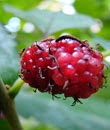 Mulberries come in different colors, depending on the type of mulberry tree they are harvested from. There are white, red and black mulberry fruits and each tastes slightly different from one another. Black mulberries are generally considered the best due to a good balanced of sweetness and tartness. In Traditional Chinese Medicine, mulberries have traditionally been used to nourish the blood and to treat constipation. Mulberries contain resveratrol, the antioxidant found in grapes and red wine, as well as vitamin C, iron and trace elements. But avoid gorging on mulberries, as ingesting large quantity of these sweet berries may cause undesirable side effects. It is interesting to note that the leaves of white mulberry are the only food source for silkworm larvae, which is cultivated for their silk.
Mulberries come in different colors, depending on the type of mulberry tree they are harvested from. There are white, red and black mulberry fruits and each tastes slightly different from one another. Black mulberries are generally considered the best due to a good balanced of sweetness and tartness. In Traditional Chinese Medicine, mulberries have traditionally been used to nourish the blood and to treat constipation. Mulberries contain resveratrol, the antioxidant found in grapes and red wine, as well as vitamin C, iron and trace elements. But avoid gorging on mulberries, as ingesting large quantity of these sweet berries may cause undesirable side effects. It is interesting to note that the leaves of white mulberry are the only food source for silkworm larvae, which is cultivated for their silk.
Goji Berries
 Also known as wolfberries, goji berries have been used as a form of medicine as well as food for thousands of years by the Chinese. Traditionally used as an eye tonic, modern scientific studies have now attributed the vision-protecting properties of goji berries to the high-levels of zeaxanthin, a form of carotenoid critical for healthy eyes, found in these small fruits. Goji berries are also packed with vitamin C, trace minerals, protein, amino acids, fats and other phytochemicals, earning them the superfruit moniker.
Also known as wolfberries, goji berries have been used as a form of medicine as well as food for thousands of years by the Chinese. Traditionally used as an eye tonic, modern scientific studies have now attributed the vision-protecting properties of goji berries to the high-levels of zeaxanthin, a form of carotenoid critical for healthy eyes, found in these small fruits. Goji berries are also packed with vitamin C, trace minerals, protein, amino acids, fats and other phytochemicals, earning them the superfruit moniker.
Blueberries
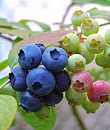 Blueberries are well-known for their ability to douse chronic inflammation. Studies that have associated blueberries with better vision, improved memory, reduced intestinal inflammation and lower cancer risk can be traced to these miracle berries’ potent anti-inflammatory properties. The disease-preventing effects could be due to the anthocyanins, resveratrol and other phytochemicals found abundance in blueberries.
Blueberries are well-known for their ability to douse chronic inflammation. Studies that have associated blueberries with better vision, improved memory, reduced intestinal inflammation and lower cancer risk can be traced to these miracle berries’ potent anti-inflammatory properties. The disease-preventing effects could be due to the anthocyanins, resveratrol and other phytochemicals found abundance in blueberries.
Dates
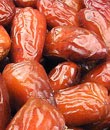 A staple food in the Middle East, dried dates are enjoyed everywhere now because of their wide availability and of course, their delicious sweetness. There are well over hundred types of dates, but dates can generally be categorized into three different groups: soft, semi-dry and dry. Besides containing high levels of energy-giving sugar, dates are also high in filling fiber, just what you need to stop a late afternoon hunger pang. But due to their high sugar content, go easy on them, especially if you are watching your blood glucose levels.
A staple food in the Middle East, dried dates are enjoyed everywhere now because of their wide availability and of course, their delicious sweetness. There are well over hundred types of dates, but dates can generally be categorized into three different groups: soft, semi-dry and dry. Besides containing high levels of energy-giving sugar, dates are also high in filling fiber, just what you need to stop a late afternoon hunger pang. But due to their high sugar content, go easy on them, especially if you are watching your blood glucose levels.
Figs
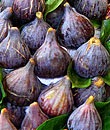 Do you know that the fig is called “fruit without flower” in Chinese (无花果)? However, to be exact, fig is not a fruit but a combination of the flowers and seeds of the fig tree. A potassium powerhouse, figs are godsend if your diet contains high levels of sodium. Low potassium intake combined with a sodium-rich diet has been associated with high blood pressure. Figs are popular all over the world due to their refreshing sweetness. They are rich in dietary fiber and are a sweet source of calcium and magnesium. Like other dried fruits, figs also provide good amounts of antioxidants for people who adore them.
Do you know that the fig is called “fruit without flower” in Chinese (无花果)? However, to be exact, fig is not a fruit but a combination of the flowers and seeds of the fig tree. A potassium powerhouse, figs are godsend if your diet contains high levels of sodium. Low potassium intake combined with a sodium-rich diet has been associated with high blood pressure. Figs are popular all over the world due to their refreshing sweetness. They are rich in dietary fiber and are a sweet source of calcium and magnesium. Like other dried fruits, figs also provide good amounts of antioxidants for people who adore them.
Apricots
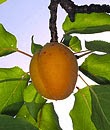 Looking somewhat like a peach, apricot is another fruit, other than fig, that has been cultivated by humans since ancient times. Apricots are rich in vitamin A and beta carotene, which are especially beneficial for the eyes. The high fiber content in apricots also make them a good choice for those with constipation.
Looking somewhat like a peach, apricot is another fruit, other than fig, that has been cultivated by humans since ancient times. Apricots are rich in vitamin A and beta carotene, which are especially beneficial for the eyes. The high fiber content in apricots also make them a good choice for those with constipation.
Trail Mix
 If you are looking a snack that contains a good mixed of proteins, carbohydrates, antioxidants as well as fats, then you won’t go wrong with a high-quality trail mix. Combining selected dried fruits, nuts and/or seeds, trail mix gives you the best of everything: the sweetness and tartness of dried fruits as well as the crunchiness of nuts and seeds.
If you are looking a snack that contains a good mixed of proteins, carbohydrates, antioxidants as well as fats, then you won’t go wrong with a high-quality trail mix. Combining selected dried fruits, nuts and/or seeds, trail mix gives you the best of everything: the sweetness and tartness of dried fruits as well as the crunchiness of nuts and seeds.